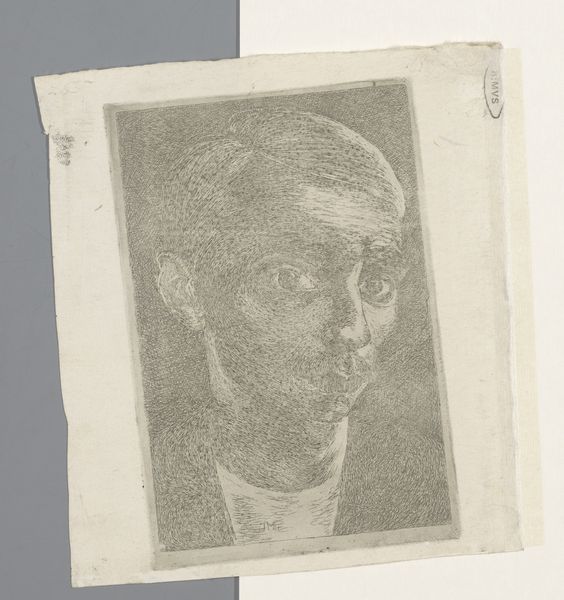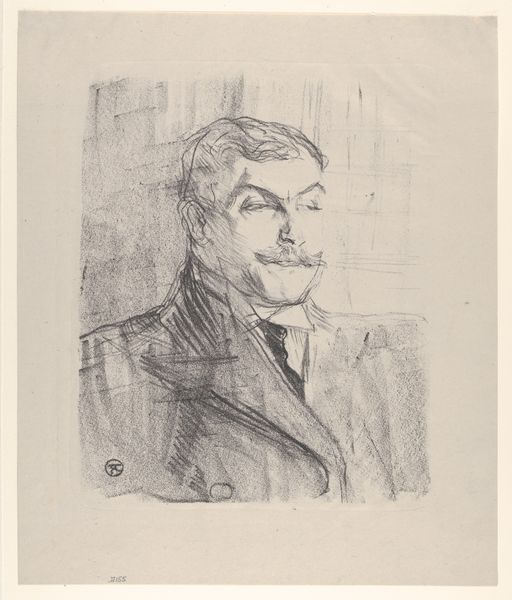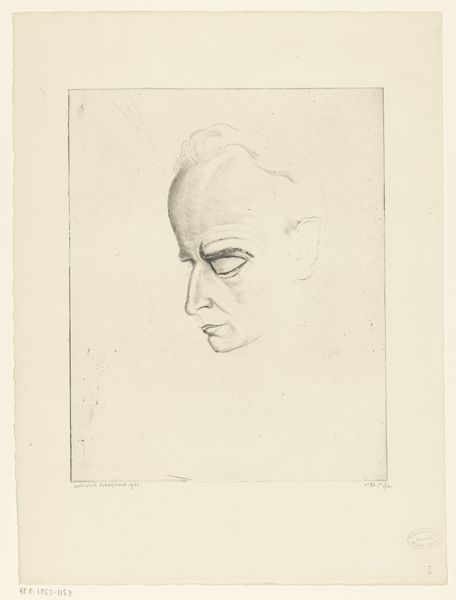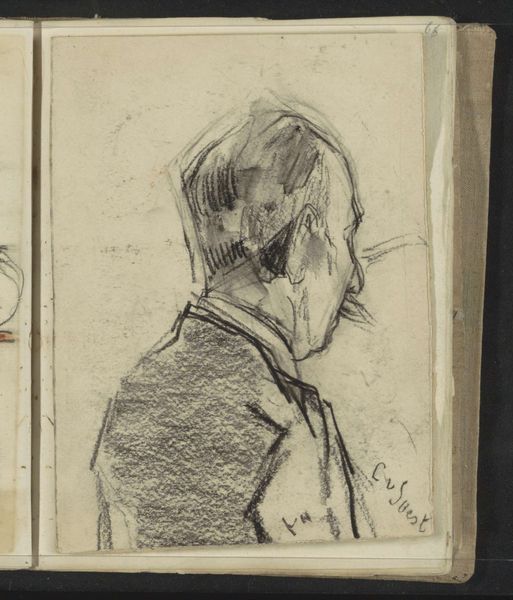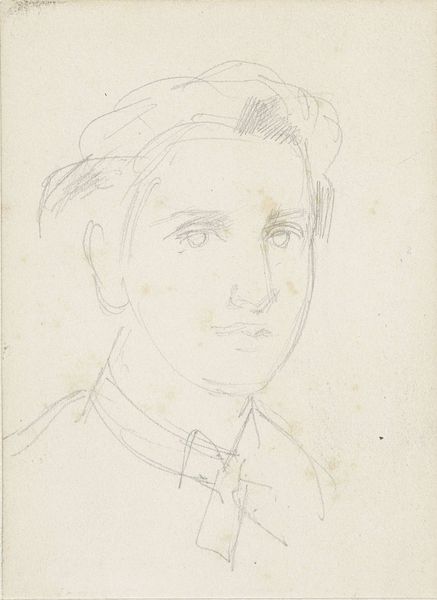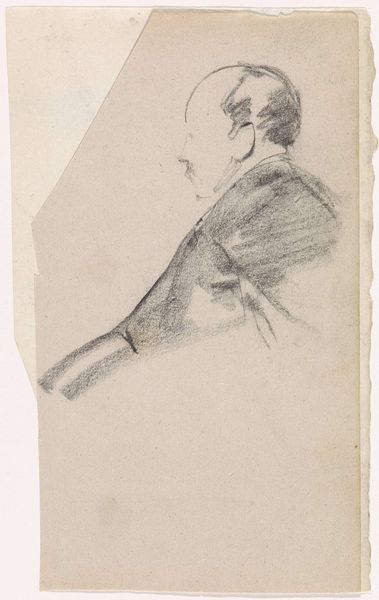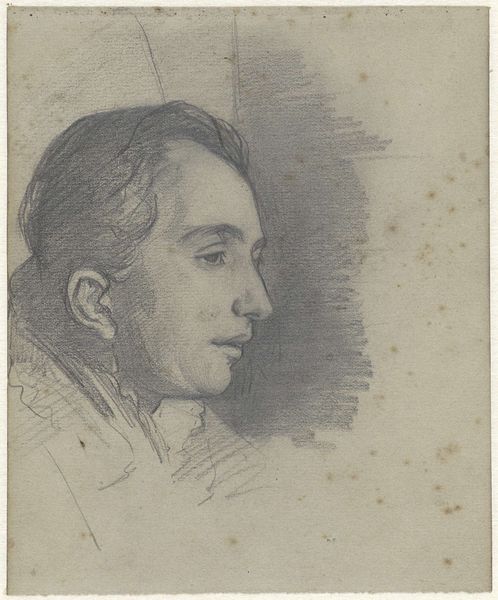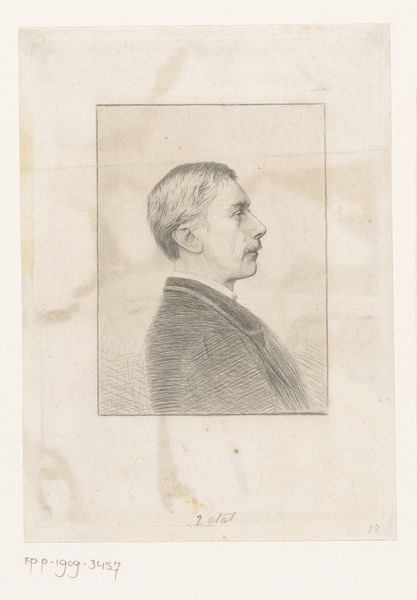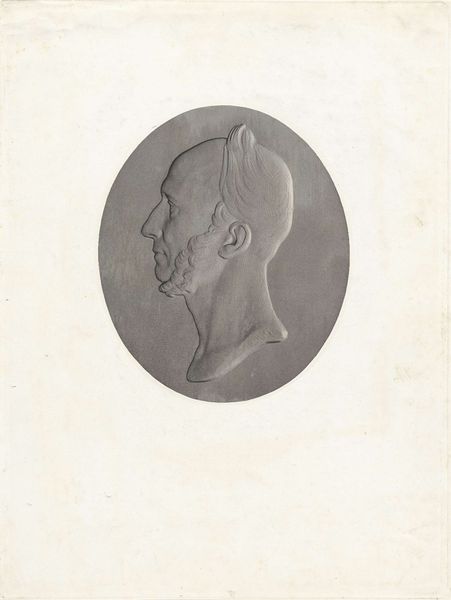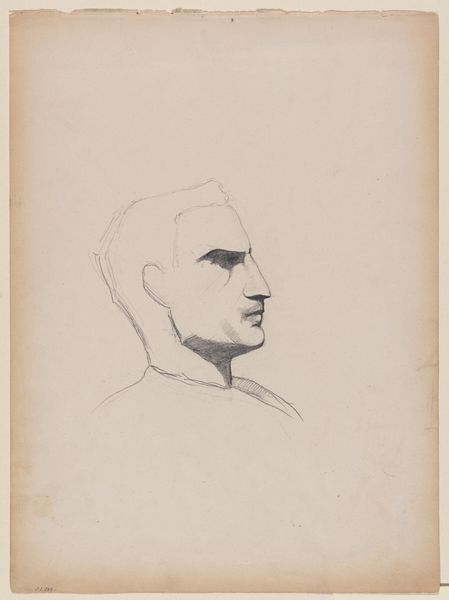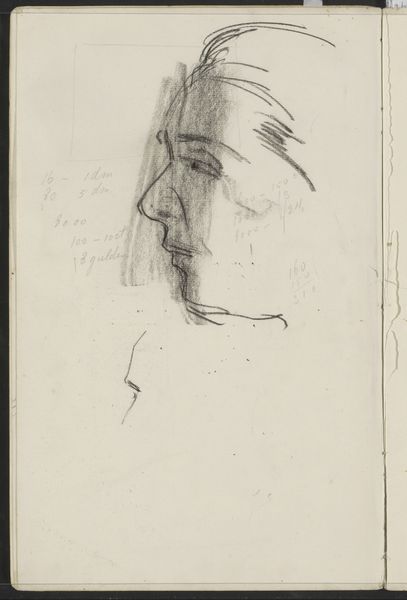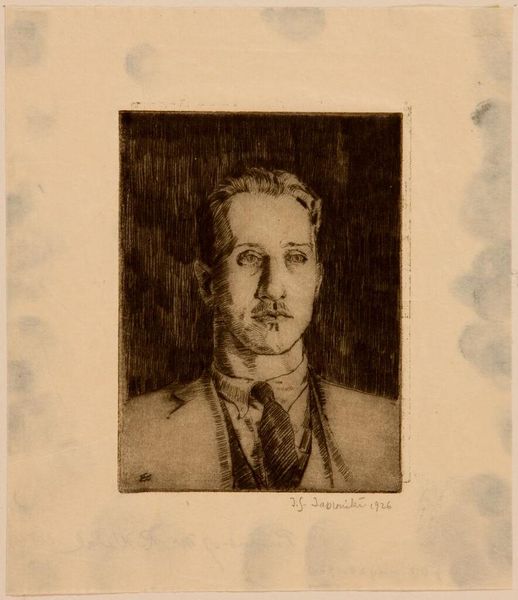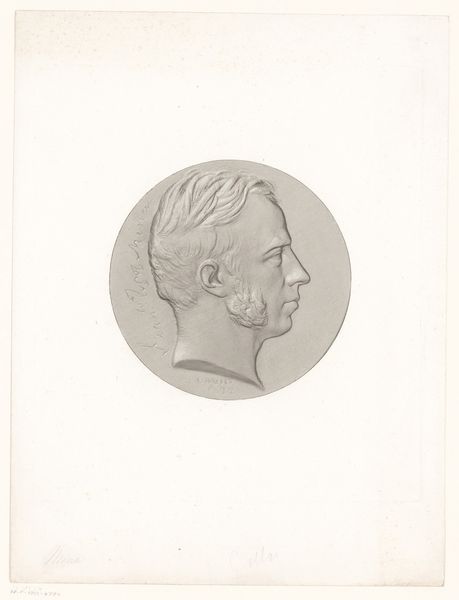![Untitled [Head] by Cecil Collins](/_next/image?url=https%3A%2F%2Fd2w8kbdekdi1gv.cloudfront.net%2FeyJidWNrZXQiOiAiYXJ0ZXJhLWltYWdlcy1idWNrZXQiLCAia2V5IjogImFydHdvcmtzLzNmZDI5ZWQ0LTA2NjUtNGYwZS1iODYzLTFhZmMwMDIwZGEyOC8zZmQyOWVkNC0wNjY1LTRmMGUtYjg2My0xYWZjMDAyMGRhMjhfZnVsbC5qcGciLCAiZWRpdHMiOiB7InJlc2l6ZSI6IHsid2lkdGgiOiAxOTIwLCAiaGVpZ2h0IjogMTkyMCwgImZpdCI6ICJpbnNpZGUifX19&w=3840&q=75)
Dimensions: image: 97 x 75 mm
Copyright: © Tate | CC-BY-NC-ND 4.0 DEED, Photo: Tate
Editor: This etching, "Untitled [Head]" by Cecil Collins, shows a man in profile. It's quite small, almost like a passport photo. What's striking to me is its formality; how might this relate to the artistic and social context of Collins' time? Curator: It's interesting you note the formality. Consider the role of portraiture throughout history. It's often been tied to power, status, and representation within specific social strata. Could this etching, even in its seemingly modest scale, be engaging with those traditions? Editor: Possibly! It almost feels like a study, though. Curator: Precisely. How might the work function as a study, contributing to the artist's broader body of work or engaging with prevailing artistic trends of the time? Editor: That gives me a lot to think about. Thanks! Curator: My pleasure!
Comments
Join the conversation
Join millions of artists and users on Artera today and experience the ultimate creative platform.
tate 6 months ago
⋮
This head and shoulder portrait has been carefully drawn on to a metal plate with a network of engraved lines. The identity of the sitter is not known but it bears a slight resemblance to the artist. The meticulous detail of this straightforward portrait is characteristic of Collins who experimented with several different print-making processes throughout his lifetime, and created some of his most powerful images by means of etching, lithography and roneo printing. This naturalistic image is unusual for Collins who, pursuing his vision of a world that had existed before industrialisation and mechanisation, created his own version of archetypal figures, such as the Fool and the Angel, to reawaken the inner self. In an essay he titled, The Vision of the Fool, published in 1947, Collins described ‘an enormous decay in spiritual fertility, a society without culture, a winter of human life’ (Keeble, p.73) which could only be prevented by ‘The Saint, the artist, the poet, and the Fool’ who support ‘the existence of a new life ... and the coming of light’ (Keeble, p.81).
